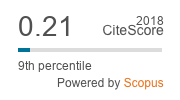Representação Mental e Mudança Terapêutica:
Uma Contribuição da Perspectiva Psicanalítica da Teoria das Relações Objetais
Mots-clés :
psicologia; Tratamento e Prevenção Psicológica; Intervenção Terapêutica, Representação mental, Mudança terapêutica, Psicoterapia psicanalítica, Relações objetaisRésumé
Apesar do avanço das pesquisas em psicoterapia, estudos na abordagem psicanalítica ainda são escassos. Assim, o objetivo deste artigo é apresentar e discutir a contribuição do conceito de representação mental como um constructo importante para fundamentar pesquisas na área psicanalítica baseadas na compreensão e identificação dos elementos envolvidos no processo terapêutico associados à mudança terapêutica. Inicialmente são apresentados conceitos e modelos teóricos psicanalíticos para posteriormente se focalizar e discutir especificamente a noção de representação mental em relação à mudança terapêutica, destacando-se a contribuição da teoria das relações objetais e do apego. Espera-se oferecer subsídios para o aprimoramento do trabalho clínico em psicoterapias e o desenvolvimento de pesquisas em psicanálise.
Téléchargements
Références
and attachment: A theoretical review of the infant-mother
relationship. Child Development, 40, 969-1026.
Barish, K. (2004). What is therapeutic in child therapy? I.
Therapeutic engagement. Psychoanalytic Psychology, 21,
385-401.
Beres, M. D., & Joseph, E. D. (1970). Beres, D., Joseph, E.D. (1970).
The concept of mental representation in psychoanalysis.
International Journal of Psychoanalysis, 51,1-8.
Berti, T. R. (2004). Mudança psíquica: Uma revisão. Revista
Brasileira de Psicoterapia, 1, 35-49.
Besser, A., & Blatt, S. J. (2007). Identity consolidation and
internalizing and externalizing problem behaviors in early
adolescence. Psychoanalytic Psychology, 24, 125-149.
Blatt, S. J., Auerbach, J. S., Zuroff, D. C., & Shahar, G. (2006).
Evaluating efficacy, effectiveness, and mutative factors
in psychodynamic psychotherapies. In PDM Task Force.
Psychodynamic diagnostic manual (pp. 537-572). Silver
Spring, MD: Alliance of Psychoanalytic Organizations.
Blatt, S., & Levy, K. N. (2003). Attachment theory, psychoanalysis,
personality development, and psychopathology. Psychoanalytic
Inquiry, 23, 102-150.
Blatt, S. J., & Auerbach, J. S. (2003). Psychodynamic measures
of therapeutic change. Psychoanalytic Inquiry, 23, 268-307.
Blatt, S. J., Auerbach, J. S., & Levy, K. N. (1997). Mental
representations in personality development, psychopathology,
and the therapeutic process. Review of General Psychology,
1, 351-374.
Blatt, S. J., Besser, A., & Ford, R. Q. (2007). Two primary
configurations of psychopathology and change in thought
disorder in long-term intensive inpatient treatment of seriously
disturbed young adults. American Journal of Psychiatry, 164,
1561”“1567.
Blatt, S. J., Chevron, E. S., Quinlan, D. M., Schaffer, C. E., &
Wein, S. (1988). The assessment of qualitative and structural
dimensions of object representations. Unpublished research
manual. New Haven : Yale University.
Bowlby, J. (1969). Attachment and loss: Vol. 1: Attachment. New
York: Basic Books.
Dalbem, J. & Dell’Aglio, D. (2006). Teoria do apego: bases
conceituais e desenvolvimento dos modelos internos de
funcionamento. Arquivos Brasileiros de Psicologia, Retrieved
from http://seer.psicologia.ufrj.br/seer/lab19/ojs/viewarticle.
php?id=62.
Diamond, D. & Blatt, S. J. (1994). Internal working models and
the representational world in attachment and psychoanalytic
theories. In M. B. Sperling & W. H. Berman (Eds.), Attachment
in adults: Clinical and developmental perspective (pp.72-97).
New York: The Guilford Press.
Diamond, D., Blatt, S. J., Stayner, D., & Kaslow, N. (1991). Selfother
differentiation of object representations. Unpublished
research manual. New Haven : Yale University.
Fonagy, P., & Target, M. (1997). Attachment and reflective
function: Their role in self-organization. Development and
Psychopathology, 9, 679-700.
Fonagy, P., Rotha, A, & Higgitt, A. (2005). The outcome of
psychodynamic psychotherapy for psychological disorders.
Clinical Neuroscience Research, 4, 367”“377.
Gruen, R. J., & Blatt, S. J. (1990). Change in self- and object
representation during long-term dynamically oriented
treatment. Psychoanalytic Psychology, 7, 399-422.
Jung, S. I., Fillippon, A. P. M., Nunes, M. L. T., & Eizirik, C. L.
(2006). História recente e perspectivas atuais da pesquisa de
resultados em psicoterapia psicanalítica de longa duração.
Revista de Psiquiatria do Rio Grande do Sul, 3, 298-312.
Kernberg, O. F. (2005). Identity diffusion in severe personality
disorders. In S. Strack (Ed.), Handbook of personality and
psychopathology (pp. 39-49). Hoboken, N. J.: John Wiley
& Sons.
Kernberg, O. F. (2003). Psicanálise, psicoterapia psicanalítica e
psicoterapia de apoio: controvérsias contemporâneas. In A.
Green (Ed.), Psicanálise contemporânea: Revista Francesa de
psicanálise (pp.23-49). Rio de Janeiro: Imago Eds.
Kronmuller, K. T., Postelnicu, I., Hartmann, M., Stefini, A., Giser-
Elze, A., Gerhold, M., Hildegard, H. & Winkelmann, K.
(2005). Efficacy of psychodynamic short-term psychotherapy
for children and adolescents with anxiety disorders. Praxis
der Kinderpsychologie und Kinderpsychiatrie, 54, 559-577.
Mahler, M. S. (1993). O nascimento psicológico da criança:
simbiose e individuação. Porto Alegre: Artes Médicas.
Main, M. (1996). Introduction to the special section on attachment
and psychopathology: Overview of the field of attachment.
Journal of Consulting and Clinical Psychology, 64, 237-243.
Matos, M. (2004). Acerca da identidade sexual como elemento de
ligação somato-psíquica. Revista Portuguesa de Psicossomática,
6, 7-15.
Novey, S. (1958). The meaning of the concept of mental
representation of objects. The Psychoanalytic Quarterly, 27,
40-366.
Pine, F. (1998). As quatro psicologias da psicanálise e seu lugar no
trabalho clínico. Revista de Psicanálise, 3, 339-359.
Ramires, V. R. R. (2003). Cognição social e teoria do apego:
Possíveis articulações. Psicologia: Reflexão e Crítica. Retrieved
from http://www.scielo.br/pdf/prc/v16n2/ a20v16n2.pdf.
Russell, R. L., & Orlinsky, D. E. (1996). Psychotherapy research
in historical perspective: implications for mental health care
policy. Archives of General Psychiatry, 53, 708-715.
Zaslavsky, J. (2005). Por que publicar a pesquisa qualitativa em
psicoterapia e psicanálise? (Editorial). Revista de Psiquiatria
do Rio Grande do Sul, 3, 238-239.



